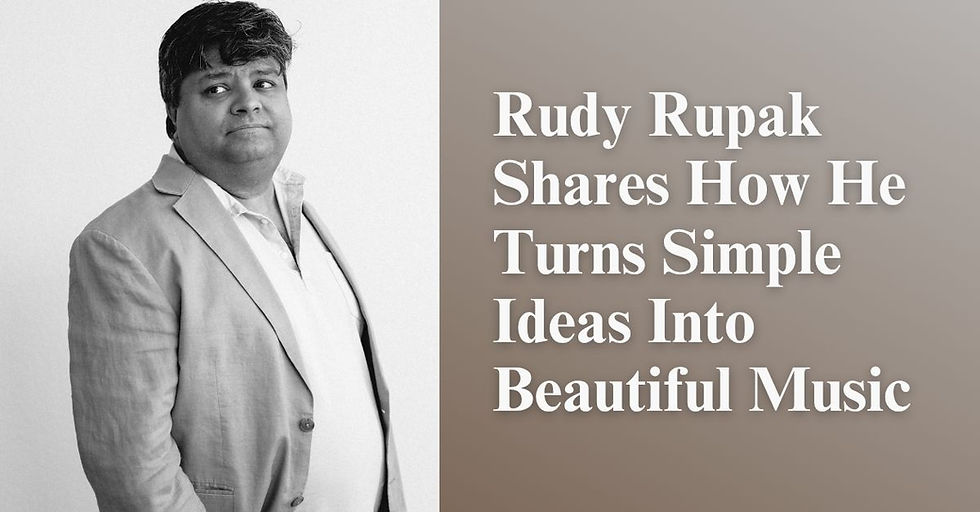Rudy Rupak’s Mastery of Music, Film, and Storytelling
- Rudy Rupak
- Jul 29
- 2 min read

In the dynamic world of film and media, few individuals have demonstrated the ability to bridge multiple creative disciplines with the level of finesse and insight shown by Rudy Rupak. As a producer and screenwriter, Rupak has established a body of work that reflects a deep understanding of cinematic structure, narrative development, and the emotional power of music. His integrated approach to filmmaking is a testament to the value of versatility in the modern entertainment industry.
A Foundation Built on Industry Insight
Rupak's entry into the world of film began behind the scenes, working in distribution. This early exposure to the commercial and logistical elements of the industry gave him a clear understanding of how content is shaped not only artistically but also strategically. It is this rare combination—creative instinct grounded in industry knowledge—that has guided much of his work as a producer and writer.
This foundational experience allowed Rupak to identify opportunities where storytelling and market appeal could intersect. It also equipped him with the tools to navigate the competitive entertainment landscape with both creative credibility and business acumen.
Notable Contributions to 1990s Cinema
Rupak’s production work gained recognition in the 1990s, particularly with Snowboard Academy (1996), a comedy film that captured the youthful spirit of the era. Featuring Corey Haim, Jim Varney, and Brigitte Nielsen, the film balanced humor and action in a setting that appealed to a generation of viewers interested in sports and pop culture. As both co-writer and producer, Rupak played a pivotal role in shaping the film’s tone, pacing, and character-driven plot.
In 1999, Rupak co-wrote She’s Too Tall, a romantic comedy that delved into themes of self-image and societal expectations. The film offered a thoughtful yet accessible narrative, showcasing his ability to address meaningful topics within a commercially viable format. His work on the film further demonstrated his talent for crafting stories that are both entertaining and emotionally resonant.
A Deep Understanding of Music as Narrative
Although not formally credited as a composer, Rupak has consistently shown a refined sensitivity to the role of music in film. He recognizes music as more than a supporting element—it is a driving force that enhances atmosphere, conveys subtext, and deepens audience engagement. In his work, soundtracks are carefully selected and timed to amplify pivotal moments, contributing to the overall narrative cohesion.
This musical awareness complements his storytelling, allowing him to shape a film’s emotional rhythm with precision. His films reflect an understanding that story is not just visual or verbal, but also auditory.
An Integrated Approach to Creative Development
What distinguishes Rudy Rupak’s career is his commitment to a unified creative vision. Rather than treating production, writing, and music as isolated functions, he integrates them into a single, cohesive process. This multidimensional approach results in content that feels both intentional and immersive.
A Continuing Influence
Although most recognized for his work in the 1990s, Rupak’s creative approach remains relevant in today’s content-rich media environment. His ability to blend storytelling, direction, and music continues to serve as a model for cross-disciplinary creators aiming to produce work that resonates across platforms and audiences.
Rudy Rupak’s legacy is defined by thoughtful craftsmanship and a rare ability to harmonize the elements of film into a singular, compelling experience.




Comments